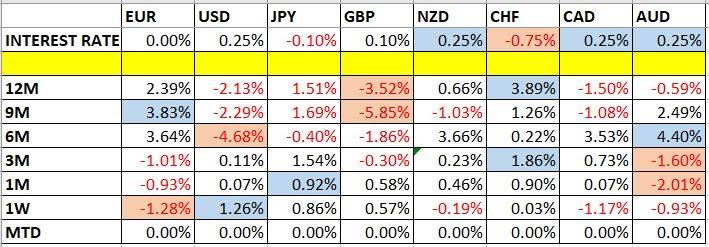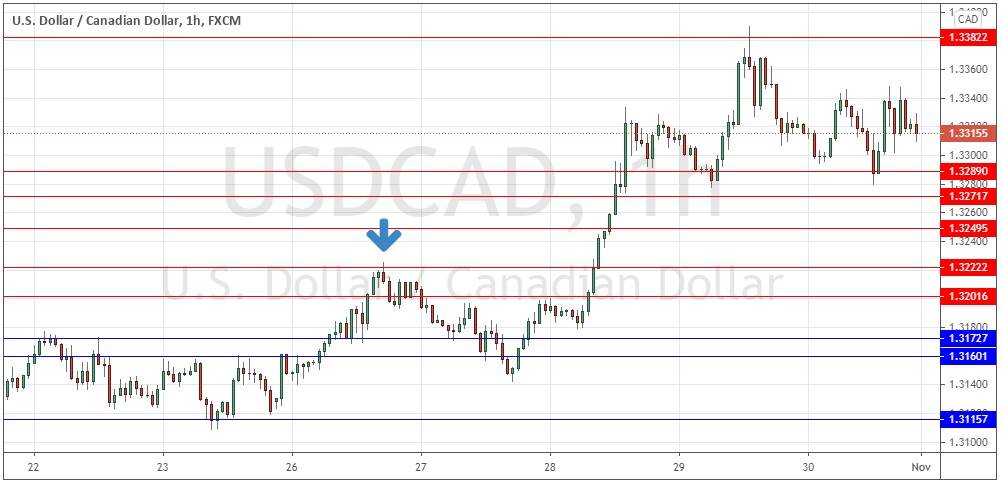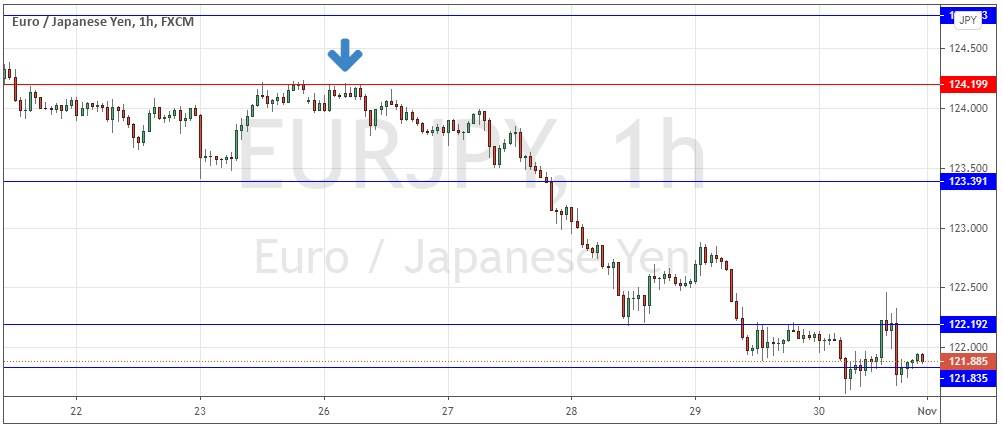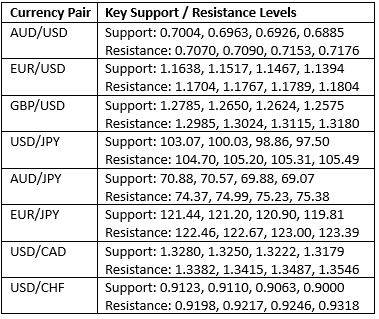This week we’ll begin with our monthly and weekly forecasts of the currency pairs worth watching. The first part of our forecast is based upon our research of the past 16 years of Forex prices, which show that the following methodologies have all produced profitable results:
Trading the two currencies that are trending the most strongly over the past 3 months.
Assuming that trends are usually ready to reverse after 12 months.
Trading against very strong counter-trend movements by currency pairs made during the previous week.
Buying currencies with high interest rates and selling currencies with low interest rates.
Let us look at the relevant data of currency price changes and interest rates to date, which we compiled using a trade-weighted index of the major global currencies:

Monthly Forecast November 2020
This month, we forecast that the EUR/USD currency pair will be likely to fall in value. Last month, we forecasted that the USD/JPY currency pair was likely to fall in value. Its final performance was follows:
Weekly Forecast 25th October 2020
Last week, we made no weekly forecast.
This week, we again make no weekly forecast, as there were no very strong counter-trend price movements in the Forex market last week.
The Forex market showed a considerably higher level of volatility compared to the previous week, with 44% of the important currency pairs and crosses moving by more than 1% in value last week. Volatility is likely to be at an even higher level this week.
Last week was dominated by relative strength in the U.S. Dollar, and relative weakness in the Euro.
You can trade our forecasts in a real or demo Forex brokerage account.
Previous Monthly Forecasts
You can view the results of our previous monthly forecasts here.
Key Support/Resistance Levels for Popular Pairs
We teach that trades should be entered and exited at or very close to key support and resistance levels. There are certain key support and resistance levels that can be watched on the more popular currency pairs this week.

Let us see how trading a reversal from two of last week’s key levels would have worked out:
USD/CAD
We had expected the level at 1.3222 might act as resistance, as it had acted previously as both support and resistance. Note how these “flipping” levels can work well. The H1 chart below shows how the price rejected this level during last Tuesday’s New York session, turning decisively bearish when a bearish engulfing candlestick broke down right away at the down arrow shown in the price chart below. This trade was profitable despite subsequent bullish price action, achieving a maximum positive reward to risk ratio of more than 3 to 1 based upon the size of the entry candlestick.
EUR/JPY
We had expected the level at 124.20 might act as resistance, as it had acted previously as both support and resistance. Note how these “flipping” levels can work well. The H1 chart below shows how the price rejected this level during last Monday’s Asian session, which can often by a good time to enter trades in JPY currency crosses. The price turned decisively bearish when a bearish pin / inside candlestick combination broke down right away at the down arrow shown in the price chart below. This trade has been extremely profitable so far, achieving a maximum positive reward to risk ratio so far of more than 18 to 1 based upon the size of the entry candlestick structure.


